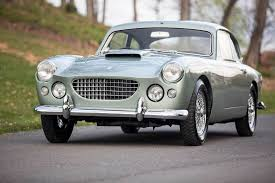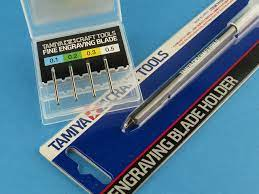-
Posts
39,243 -
Joined
-
Last visited
Content Type
Profiles
Forums
Events
Gallery
Everything posted by Ace-Garageguy
-
Irresponsible individuals gave the whole postwar hot-rod movement a bad name. "Serious" car clubs working with local communities opened many dragstrips to channel the competitive spirit into safe venues...most of which are long gone, bulldozed to build housing developments and shopping malls. The simple truth is that when owners of 500+HP vehicles gather in one place, the temptation to show off and/or race can be overwhelming for those lacking sufficient self-control...and those who have no sweat-equity in actually building their cars are probably going to be more likely to abuse them. EDIT: Somehow, I don't see a resurgence of local dragstrips in this safety-obsessed world we live in now. The last one reasonably close to me closed years ago, after owners of homes built nearby long after the strip was built (in the middle of nowhere at the time) complained so loudly about the noise that the facility was shut down by the local gubmint. The closest one now is about an hour and a half away, still quite accessible for those who race responsibly, but not worth the effort for the others.
-
Unintended negative consequences are all too common results of well-intentioned actions, policies, and procedures instituted by groups or individuals who don't fully think things through. "What's the worst that can happen?" should be a prominent consideration during any decision-making process. EDIT: ...particularly in engineering. Any engineer who's not thinking down the road about potential failure modes is only doing half the job. The big difference between good race-car prep (or car building in general) and everything else is a constant awareness of what can go wrong, 'cause ol' Murphy is always looking over your shoulder to exploit any weakness. Acknowledging the potential for and planning for failure is the reason that aircraft have double and triple redundant systems, why wiring harnesses and plumbing elements are carefully supported to prevent chafing, and why work done to anything that flies is supposed to be done by highly qualified people and double-checked by even more highly-qualified people. Problems with engineered things, from water systems to airliners, are ALWAYS way more expensive to address after the failure than if addressed thoroughly early in the game, but somehow, the legions of bean-counters working away behind the scenes everywhere haven't yet accepted this one great truth universally.
-
Buy a whole lotta cheap stuff you don't need.
-
"Movie" was pretty much synonymous with "drive in" when I was a little feller.
-
Ah yes. Few things in life as much fun as cleaning up after morons, especially crooked morons.
-
Country music on the radio goes well with long drives across barren plains.
-
"Specialty of the house: meatless burgers!!!" on the menu will get me out the door pretty quickly.
-

The Official EBay Discussion Thread
Ace-Garageguy replied to iamsuperdan's topic in General Automotive Talk (Trucks and Cars)
Definitely some are doing that...and they catch a lot of folks not paying attention, too. -
-
Yup. "Vibrasonic". https://justacarguy.blogspot.com/2019/04/motorola-vibrasonic-something-i-dont.html I seem to recall there's a reference to "Vibrasonic Sound" in the Beach Boys Custom Machine. EDIT: Yup.
-

Autoquiz #599 - Finished
Ace-Garageguy replied to carsntrucks4you's topic in Real or Model? / Auto ID Quiz
Even if you didn't know it right off, the resemblance to an Aston Martin DB4 with a different face marks it as most likely English, and the styling is late '50s early '60s, so a logical starting point is searching images of that period English car builders. I plugged in the image-search term "AC cars 1960s" into floogle, and an image of this thing came up about halfway down the first page. -
You might try the Tamiya engraver tools, as they "scribe" by taking a very fine curl of material out of the cut, rather than brutally scratching like the "backside of a #11 blade" does. Used very gently, they MIGHT work for deepening panel lines post-paint, but they're not cheap. They are, however, worth every penny to me for the beautiful pre-paint scribing they're capable of delivering once you learn to use 'em.
-

The Official EBay Discussion Thread
Ace-Garageguy replied to iamsuperdan's topic in General Automotive Talk (Trucks and Cars)
I've cut WAY back on buying model cars on feePay, in large part due to exorbitant shipping. But if you shop carefully and don't get in a hurry, you can still usually find deals with reasonable shipping. The actual cost of shipping via USPS has increased recently, but nowhere near what some folks are charging. And it's not always what the auction site estimates. I've also encountered some sellers who have voluntarily refunded part of what they considered to be "too high" shipping costs, and it's nice to know there are still people who aren't out to gouge every last nickel. -
I put either a Muntz or a Lear Jet 8-track player under the dash of my mother's '63 Olds that I often drove in HS. The car got away after her death in the '80s, but I tracked it down in Texas and brought it back here to restore. I think it needs an 8-track again, but only if I can find the oh-so-cool Pink Panther and Bond movie tapes that were my dating background music.
-
"Sanity" is definitely a stumbling block when trying to rationally comprehend some recent goings-on.
-

1/20 MFH Ferrari 248F1 Chinese GP
Ace-Garageguy replied to okazaki0511's topic in Other Racing: Road Racing, Salt Flat Racers
Indeed. -

Round-2......One of These?
Ace-Garageguy replied to StevenGuthmiller's topic in General Automotive Talk (Trucks and Cars)
There's a resin '57 Buick, Modelhaus IIRC, the molds for which were pulled from an almost perfect promo many years ago. They come up online occasionally for around $300. I recently found an acetate promo in pretty decent shape that I've pulled epoxy panel molds from to save the data as well. So it's hardly an impossible or even really difficult task. -
"Civic responsibility" taken seriously by more citizens would go a long way towards curing some of today's ills.
-
Probably better for potential employment than blue hair.
-

Auto quiz #600 - Finished
Ace-Garageguy replied to carsntrucks4you's topic in Real or Model? / Auto ID Quiz
PM'd -
"There ought to be a law!!!" is one of the universal calls of the wild Karen.




